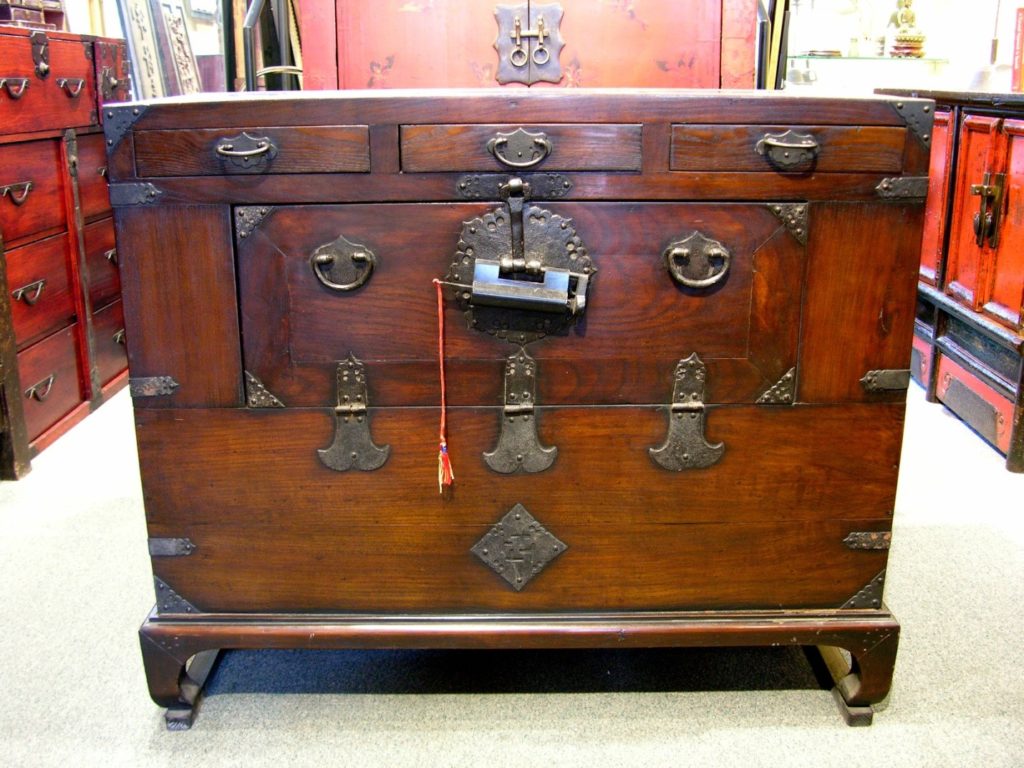
Ca 1870, elm, Cheon Chu City. City known for high quality furniture; original thick sculpted metal decorations; certified.
33½” h. 40¾” w. 19” d.
Cheon Chu City is known to have some of the best furniture produced in Korea as this was where the land-owning Yangban class gathered to prepare to take an open Imperial Examination the passing of which guaranteed upward mobility. This chest is certified as a Bandaji (clothing chest), but it is more a document chest for a scholar to store his documents, manuscripts, scrolls and reading material rather than for clothing because of the small front door instead of the full half- door stretching the length of the chest characterizing a bandaji; also because of the row of small drawers across the top of the chest made for the scholar to store his writing utensils and small personal belongings.
This chest has exceptionally thick carved ironwork showing auspicious Buddhism motifs desired by scholars of the time. The ostentatious round lock-plate edged with stylized “ruyi” design means a hope for all wishes to be granted. The bat is a motif signifying a wish for happiness and prosperity, the swallow tail hinges for perseverance and success, and the swastika towards the bottom of the chest for long life. Iron was preferred by Confucius-time scholars for its quiet strength.
The chest rests on a raised base with short inward curving legs attached to side foot stretchers. Except for some slight cracks in the back where secondary quality of wood was used, this antique chest is in excellent condition. It is certified by a Professor of Korean History and Antiquity, one of only thirteen certifiers approved by the government in the 1900s.